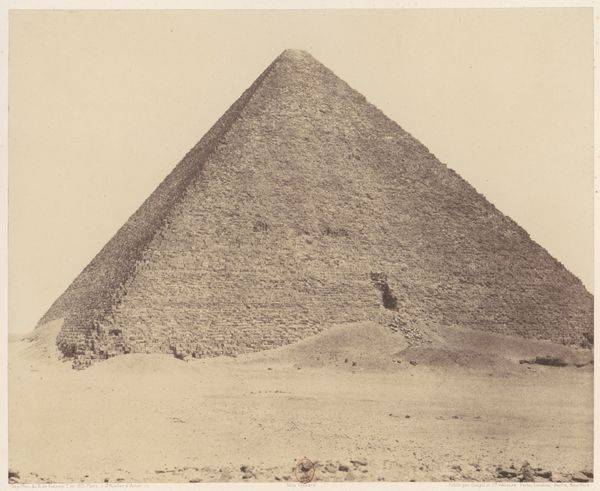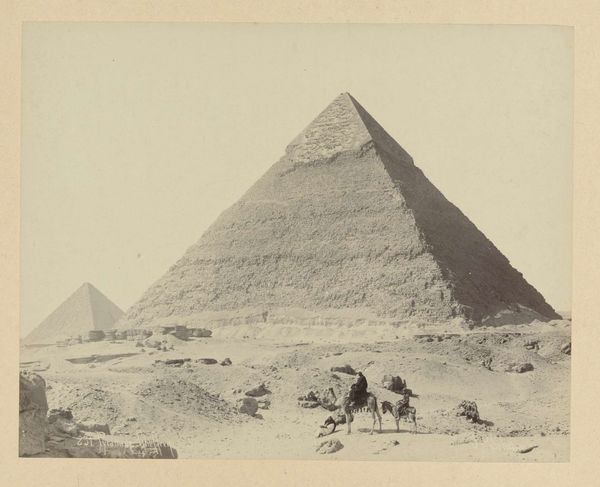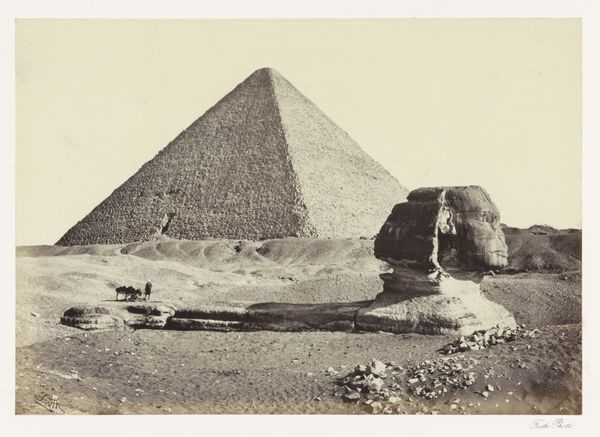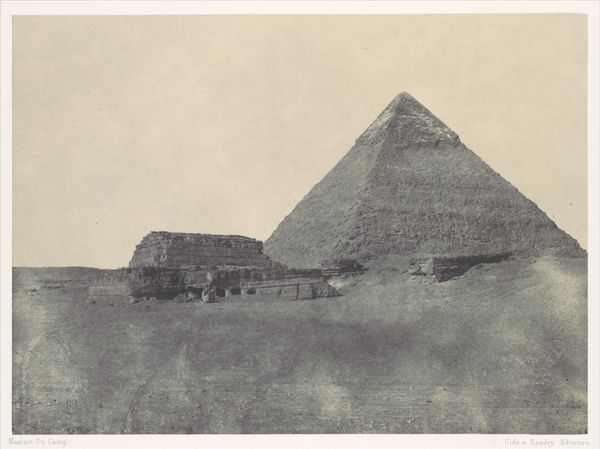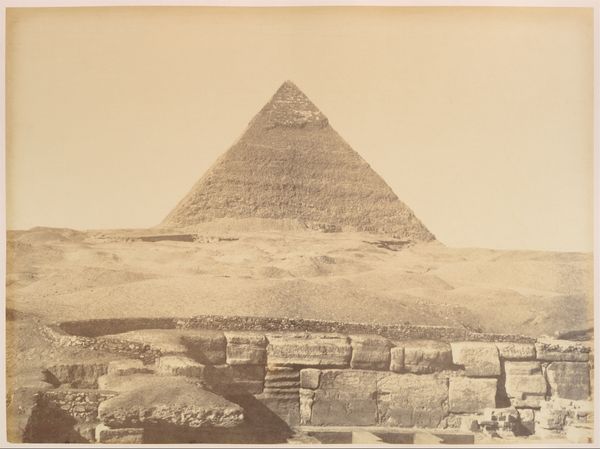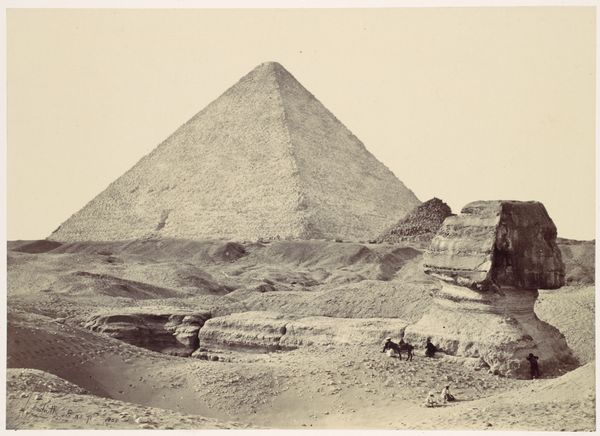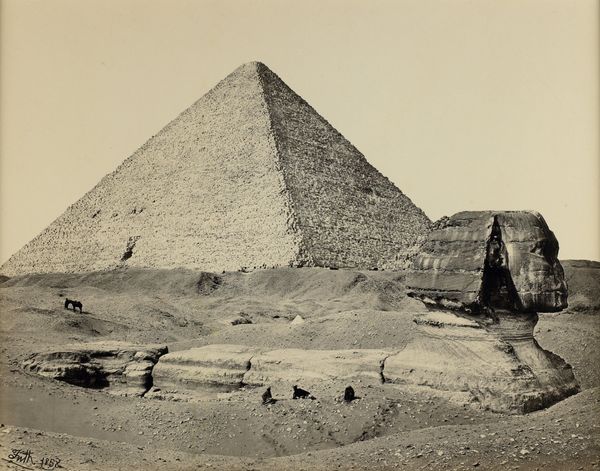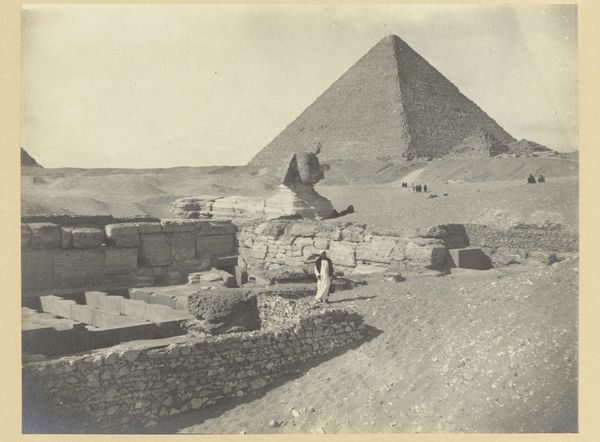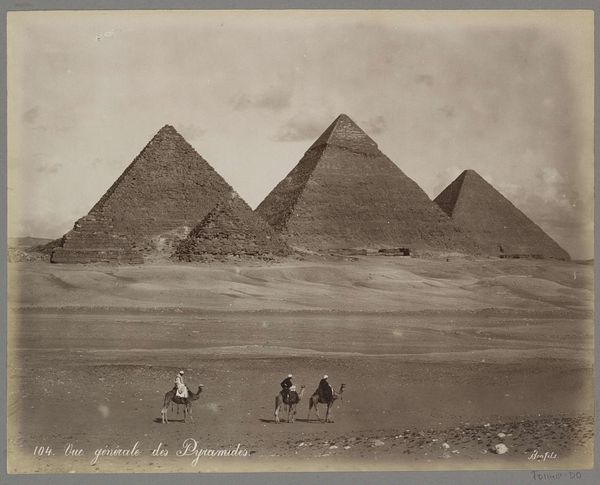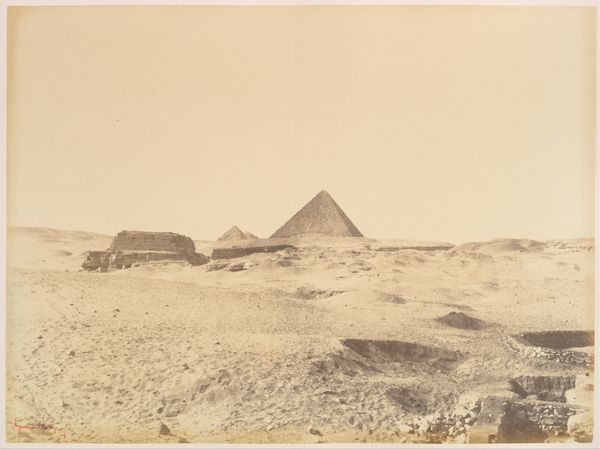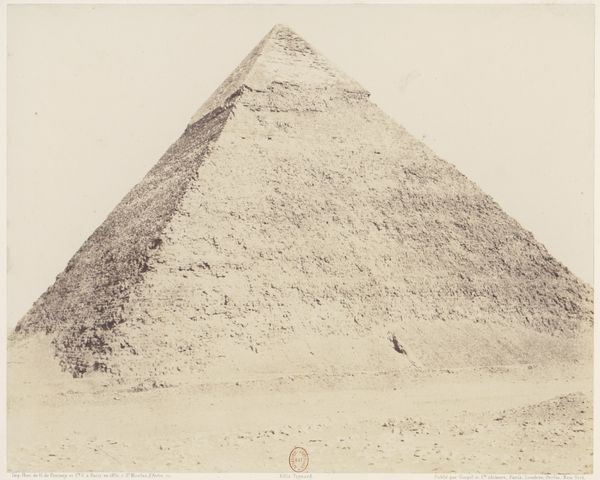
print, daguerreotype, paper, photography
# print
#
landscape
#
daguerreotype
#
paper
#
photography
#
egypt
#
ancient-mediterranean
#
france
#
natural palette
Dimensions: 14.6 × 20.8 cm (image/paper); 29.9 × 42.8 c (album page)
Copyright: Public Domain
Editor: Here we have Aimé Rochas' "Pyramide de Chéops, Egypte Moyenne," a daguerreotype print from around 1849-1852. It's striking how such an ancient structure is captured through such an early photographic process. It makes me think about time, history, and our relationship to the past. What stands out to you when you look at this image? Curator: I see a stark visual representation of power and its connection to the land, to labor, and even to technological progress. The pyramid itself, an ancient symbol of pharaonic authority, is here re-contextualized through the relatively new medium of photography, pioneered by figures deeply implicated in colonial projects. Don’t you find it unsettling how easily this new technology served to reinforce existing power structures, by romanticizing and, in effect, possessing the ancient world? Editor: That's a powerful perspective, I hadn't thought of it that way. I was mainly thinking about the pyramids as architectural marvels, a testament to human ingenuity. Curator: Exactly! And who gets the credit for that ingenuity? The pharaohs, sure, but what about the countless laborers, likely enslaved, whose bodies and lives built those monuments? Rochas' photograph, in its silence, obscures that history of exploitation. Can we separate the awe we feel for the image from the knowledge of its deeply rooted inequalities? Editor: So, seeing the image today means also recognizing the history it elides, not just the history it shows? Curator: Precisely. Photography is never neutral. It reflects the photographer’s perspective, and in this case, a perspective deeply entangled with European ambition and orientalism. Consider also how easily the pyramids become flattened into exotic postcards, removed from their complex cultural context and reduced to commodities. Editor: That gives me a lot to think about. It’s more than just a picture of a pyramid; it's a reflection of the complicated relationship between power, representation, and history. Curator: Absolutely, and that’s the challenge and the opportunity when we engage with historical artworks: to see them critically, understanding the layered meanings and the unacknowledged voices they contain.
Comments
No comments
Be the first to comment and join the conversation on the ultimate creative platform.
